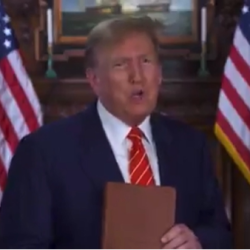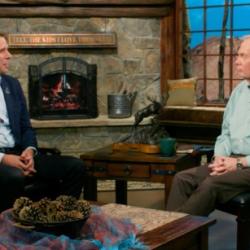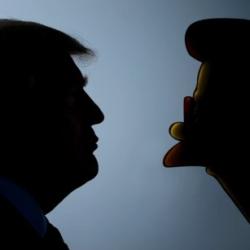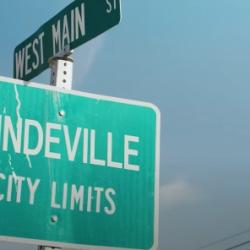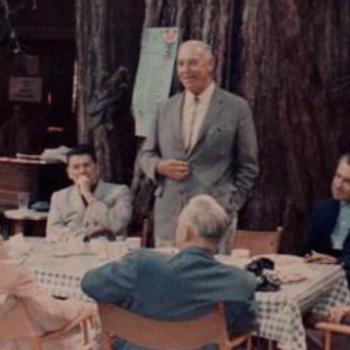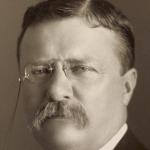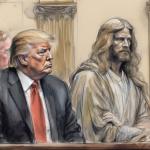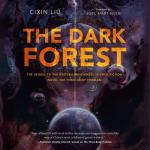An odd thing happens whenever one expresses skepticism about any particular claim of miraculous healing. That particularity — specific questions about a specific incident — is abruptly set aside and the topic is quickly changed to a more general discussion of the questioner’s abstract beliefs about the possibility of miracles and healing. Questions about what actually happened are exchanged for questions about the theological beliefs of those asking them.
Thus, for example, if I say something like, “I see no evidence that Joe Smith’s actual physical ailments were any different after he was allegedly healed by Benny Hinn on Friday night in Tallahassee,” the ensuing conversation will abandon any mention of Benny Hinn, or Joe Smith, or Smith’s ailments before or after Friday night on that stage in Florida. It will focus, instead, on me and on my beliefs and my thoughts and feelings in general about the possibility of signs and wonders.
This shift in focus is annoying and unproductive. The question wasn’t about me. The question of what I, personally, believe is far removed from — and far less interesting than — the original question of Hinn and Smith and Friday in Florida. My own beliefs are irrelevant to that concrete question. My thoughts about signs and wonders, in general, are neither significant nor wonderful when exploring what actually happened at any given “healing” event.
The original, specific question at hand is not theological but journalistic — who? what? when? where? Whether or not I or anyone else can recite any given sectarian catechism is irrelevant when seeking answers to any of those factual questions. Catechizing me instead of pursuing those answers seems like an attempt to evade the original question of what, if anything, just happened.
It is true, but irrelevant, that I personally am not a part of the Pentecostal or charismatic streams of Christianity. The only signs and wonders I usually seek or experience in a worship service tend to involve bread and wine. And it’s true that I personally am not temperamentally inclined toward more charismatic forms of worship — that rather than catching me up and taking me out of myself, such worship tends to make me acutely and uncomfortably self-conscious. But let’s concede that this is my problem, and that it has no bearing on the legitimacy of other’s experiences. That also means that it has no bearing on the legitimacy of questions about those experiences.
When it comes to questions about what actually happened, our personal inclinations shouldn’t matter. We may approach such questions as Mulder or as Scully, but the answers lie outside of us. As The X-Files reminded us each week, the truth is out there. The truth just is.
One of the things I liked about that TV series was the way it showed the skeptic and the true believer working together and complementing one another. The skeptical, scientific Dana Scully and the devoted true believer, Fox Mulder, approached their cases from different starting points and different dispositions, but both were seeking the same thing: evidence. Another way of putting that might be that they were both looking for a sign.
That’s what a “sign” is, after all, evidence. Skeptics and true believers may view that evidence differently — they may interpret the signs as signifying different things. But that difference in interpretation can’t begin until after both sides see the sign. Until then — in pursuit of the evidence — they can and should work as partners.
True believers ought to be as interested in such evidence as their skeptical counterparts. They should want to find it, record it, measure it, examine it and scrutinize every detail so that they can be wholly confident in saying, “Yes, this is a sign.” And they should want others to see that sign. They should want to show it to others — to the skeptics most of all.
Think again of how driven Agent Mulder was to collect evidence — photographs, witnesses, official reports. Think of how eager he was to make others look at every scrap of evidence he was able to find. We can’t imagine him not showing every detail of that evidence to his skeptical partner. If he had done that — if he had hidden his evidence, or simply claimed to have secret, hidden evidence that he refused to share — then viewers would have stopped regarding him as a true believer. A true believer would have nothing to hide.
This is why I can’t take supposed “faith healers” like Benny Hinn or the “apostles” of INC Christianity seriously. Every week these people conduct “healing” services and claim to have healed thousands of people every year. But the evidence of that is always elusive and vague. If someone was healed, I want to know. If there is evidence of such healing, I want to see it.
Yes, it’s true that I may view such evidence more skeptically than their most ardent followers do. I may entertain other possible explanations before sharing their miraculous conclusions conclusively. I may still hold reasonable doubts — or even, perhaps at that point, unreasonable doubts. And all of that may very well be, as they would insist, evidence of some insufficiency of faith on my part. More blessed are those who have not seen and still believed. Fine, granted.
But let me see. Let everyone see.
A sign that is kept hidden is not a sign at all. And to those from whom it is kept hidden, a secret sign is indistinguishable from a lie.






